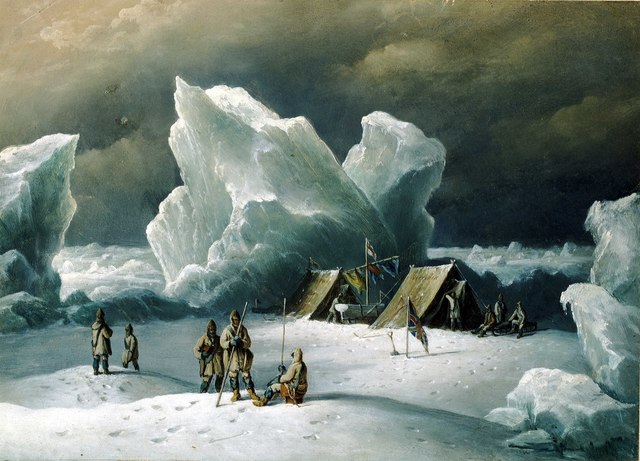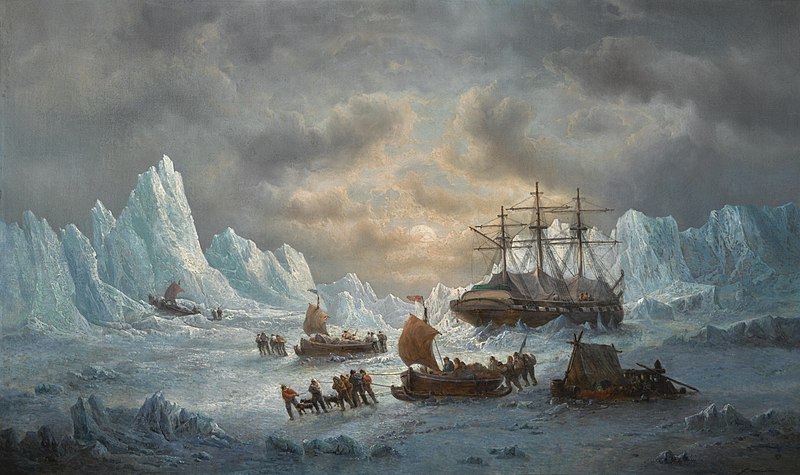The Thammasat University Library has newly acquired a book that should be useful for students interested in ecology studies, science, history, biology, anthropology, sociology, political science, futurology, and related fields.
Climate Change in Human History: Prehistory to the Present is by Benjamin Lieberman and Elizabeth Gordon
The TU Library collection includes many books about different aspects of climate change.
Professor Benjamin Lieberman teaches history at Fitchburg State University, Massachusetts, the United States of America.
Professor Elizabeth Gordon teaches geoscience at Fitchburg State University.
Their book discusses how climate has influenced the development of human civilization.
Favorable climate conditions have allowed for development of complex agricultural societies. A sudden, long-term reduction in rainfall coincided with migration of different civilizations. A more resilient society adapted to changing weather patterns. The authors argue: “Climate change and human history have become so closely connected that it is not possible to separate one from the other.”
This approach follows the example of the Climate History Network, whose website explains:
The Climate History Network (CHN) is an organization of scholars who reconstruct past climate changes and, often, identify how those changes affected human history. The CHN connects academics in many disciplines, from many countries. We encourage more collaborative and interdisciplinary teaching and research in climate history. We offer contacts and resources for professors, teachers, students, and interested lay people.
The CHN grew out of discussions on the H-Environment network in 2010. We currently have more than 150 members. We are part of the International Congress of Environmental History Organizations, and we hold regular meetings at the annual conferences of the American Society for Environmental History. We also host annual climate history workshops at Georgetown University, in Washington, DC. We are planning a major conference dedicated to past relationships between climate change and conflict.
Our programs are made possible through financial support provided by Georgetown University and the Georgetown Environment Initiative. Our listserv is hosted by Ohio State University. We do not have any political affiliation. Membership is free.
Why do we need a Climate History Network?
Anthropogenic global warming has increased public and scholarly interest in past climates. It has led researchers to create ever more detailed and accurate reconstructions of past climate changes. These reconstructions, in turn, allow other academics to find detailed connections between climate changes and human history. Taken together, this work provides fresh perspectives for our understanding of future climate changes and human responses.
Although climate reconstructions have a long history in the natural sciences, climate history is only now entering the mainstream of humanistic disciplines, such as history. It has recently entered into political discussions on climate change that aim at contextualizing present and future warming. In light of these developments within and beyond academia, many climate historians decided that they needed their own organization. This network grew out of those ambitions.

Among recent historical analyses in terms of climate, one online study from earlier this year asked:
The researcher, Dr. Dagomar Degroot of Georgetown University, stated:
According to a western intelligence report, when Vladimir Putin travelled to Beijing this February, Xi Jinping asked him to wait until after the Olympics to invade Ukraine. Frigid winter weather had, by then, frozen the Ukrainian landscape, making it strong enough to support Russian tanks. American officials warned that the Russian military could exploit this hardened terrain to invade. Putin, however, apparently agreed to wait. The weather would surely be cold enough in March.
Not long ago, it was a safe assumption to make. Yet temperatures around Kyiv and Kharkiv – Ukraine’s first and second cities, hotbeds of fighting in the present war – have warmed by more than two degrees Celsius since the middle of the twentieth century. In February, temperatures across Ukraine soared over five degrees Celsius above their mid-twentieth century averages. Frozen ground that otherwise would have held Russian heavy armor collapsed into mud.
When Putin finally launched his brutal invasion on February 24th, images proliferated across social media of Russian tanks and rocket launchers abandoned in the mud. In northern Ukraine, Russian vehicles kept to roads, forming long columns easily bombed from the air. Far from the blitzkrieg Putin seems to have expected, the invasion from the north advanced at a snail’s pace. It was an unexpected reversal that owed much to the bravery and skill of Ukrainian soldiers and their leaders. Yet it may also have owed something to the influence of human-caused climate change.
Human activities have warmed Earth’s climate by about one degree Celsius since the middle of the twentieth century, and land is heating up at about twice the speed of the oceans. This is why Kyiv and Kharkiv have warmed around as much as Washington, DC and New York City. The combination of the speed, magnitude, and cause of this climate change has no precedent in Earth’s history. Yet natural forces have changed Earth’s climate even before the industrial era, in ways that shaped the outcome of wars…
Here again, history may be repeating itself. Near Kyiv, Ukrainian defenders seem to have breached a dam, sending floodwaters north of the Dnieper River. Until recently, a Russian convoy had stalled nearby, owing in part to challenging terrain and the vigorous Ukrainian defense. The fog of war is thick even in a battlefield that can feel saturated by social media, and for now it is hard to know to what extent the floods slowed the Russian advance. If they did, climate change may again have played a pivotal role. Without today’s warm temperatures, the water would have frozen, and intentional floods would have been much harder to execute.
Temperatures across Ukraine plummeted over the weekend, however, because climate change consists of gradual trends and therefore does not determine daily weather. Unfortunately, the sixteenth century reveals that “hydraulic warfare” can fail in such conditions. Spanish armies repeatedly invaded into rebel territories over frozen rivers and flooded landscapes that otherwise would have blocked their progress. Rebel defenders struggled to break up the ice, sometimes by literally hacking at it with axes, but it was often not enough…
Yet the greatest effects of climate change on war may unfold far from the battlefield. When rebels in the Low Countries coalesced into a country – the Dutch Republic, precursor of today’s Netherlands – they found ingenious ways to cope with a cooler climate, and this may have given them a military edge over other European powers. Today, a warm spring would ease Europe’s dependence on Russian natural gas, providing new motivation for blocking a key export of Putin’s regime – and the most important source of Russian leverage over western Europe. Exports that cripple Russia’s economy may yet compel Putin to withdraw – though, tragically, the cost to ordinary Russians would be immense.
Researchers and military officials have long focused on the potential for climate change to cause wars by shifting the supply, accessibility, or defensibility of desirable resources. Yet the history of the Little Ice Age may reveal that climate change most profoundly affects wars by transforming how they can be fought, occasionally to the detriment of one side and the salvation of another. As Putin may be discovering, in a rapidly warming world the influence of climate change is inescapable – even for one of the world’s most ruthless regimes.

(All images courtesy of Wikimedia Commons)

